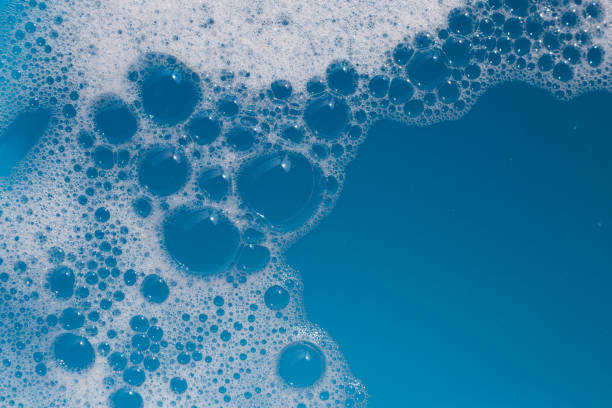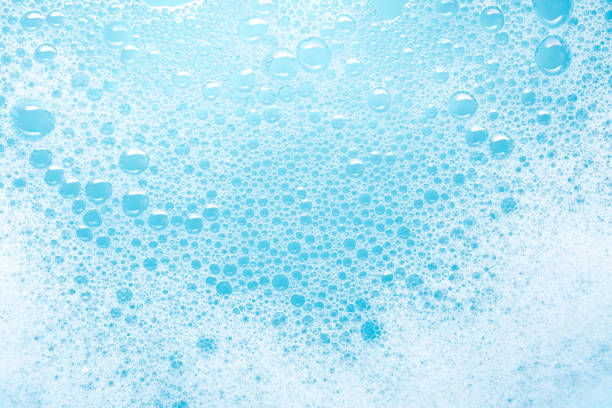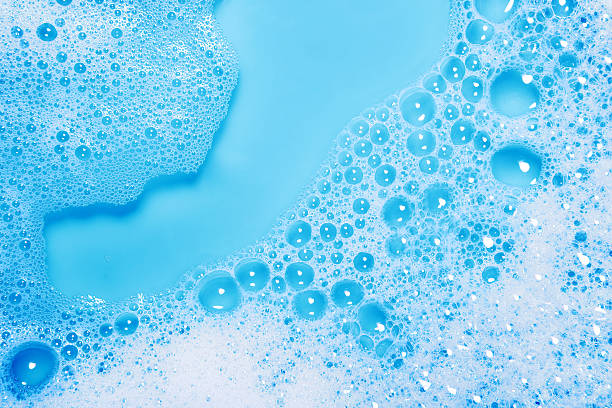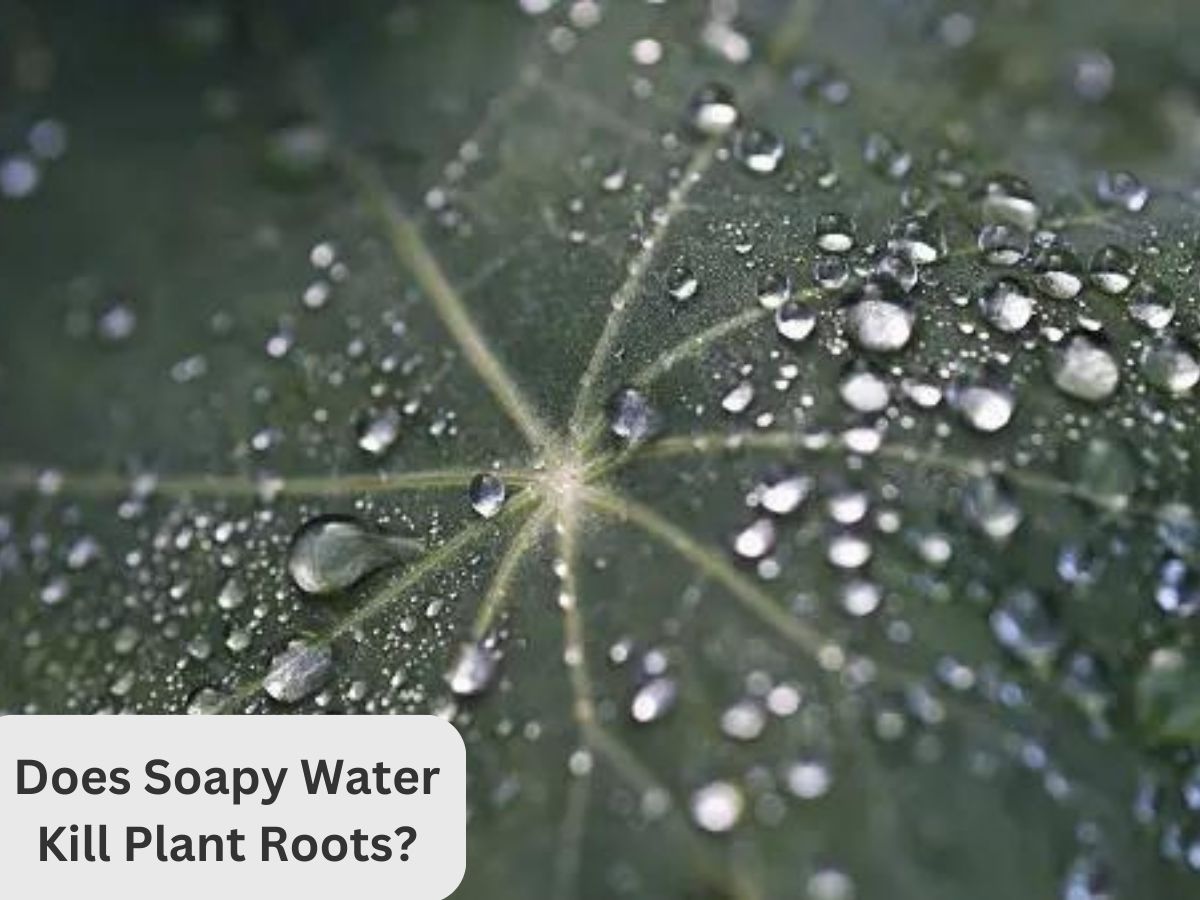Does Soapy Water Kill Plant Roots? It’s a question that has left many gardeners pondering, and today, we’re diving headfirst into this intriguing horticultural enigma.
In the world of gardening, we’re often armed with a collection of remedies and tricks to keep our green companions thriving. But when it comes to using soapy water, there’s a cloud of uncertainty hovering over its potential impact on the very heart of our plants.
Understanding the impact of soapy water on your garden is not just a matter of curiosity; it’s a key aspect of responsible gardening. As any seasoned horticulturist will tell you, the health of a plant’s roots is the foundation of its overall well-being. Yet, the practice of using soapy water has been shrouded in controversy, with fervent proponents and wary skeptics.
So, let’s address it right away: Yes, the use of soapy water in your garden can indeed raise concerns about the health of your plant roots. However, before you hit the panic button or swear off this age-old gardening tip, it’s essential to understand that the story isn’t black and white.
In this article, we’ll embark on a journey to demystify the relationship between soapy water and plant roots. We’ll explore the science behind it, the common beliefs, and most importantly, whether you should be worried or embrace soapy water as a helpful tool in your gardening toolbox.
The Science Behind Soapy Water and Plants
To uncover the truth about whether soapy water can harm plant roots, we need to take a closer look at the science behind it. It all begins with understanding what soapy water is composed of and how it interacts with our leafy friends.
At its core, soapy water is a simple concoction. It comprises water and soap. But what’s crucial here is the type of soap you use. In most cases, gardeners opt for mild dish soap, and that’s what we’ll focus on.
The type of soap commonly used in gardening is usually mild dish soap. What sets it apart are the compounds known as surfactants present in the soap. These surfactants are the secret sauce that can influence how soapy water interacts with plants.
Surfactants are remarkable molecules that have the power to disrupt the surface tension of water. In essence, they break down the invisible barrier that causes water to bead up and form droplets on surfaces.

Surface Tension and Its Role:
The magic of soapy water lies in its ability to modify the surface tension of water. Surface tension is the force that causes water molecules to cling together at the surface, forming a sort of “skin.” In the world of plants, this surface tension plays a crucial role in various processes.
Firstly, plant leaves are covered in a thin layer of water, and this water needs to be spread evenly across the surface to ensure effective photosynthesis. If the water forms droplets, it can block sunlight and hinder the plant’s ability to harness energy.
This is where soap comes into play. When you add soap to water, the surfactants in the soap reduce the surface tension. This means that the water can now spread out more evenly, forming a thin, uniform film on the leaves. In essence, soap helps water “wet” the plant’s surface, ensuring that every inch of the leaf is bathed in sunlight.
Implications for Plants:
Now, you might be wondering how this relates to our plants. Well, when we use soapy water on our garden’s foliage, it can have several implications:
- Pest Control: The reduced surface tension allows the soapy water to coat the leaves more thoroughly. This can deter pests like aphids, mites, mealybugs, and many more, making it harder for them to cling to and damage the plant.
- Fungal Diseases: Soapy water can also help prevent some fungal diseases by washing away spores and reducing the conditions that favor their growth.
- Leaf Health: Cleaner leaves mean better photosynthesis and respiration, as it’s easier for the leaves to exchange gases and capture sunlight.
However, when it comes to plant roots, things get a bit more complicated. The roots are below ground, and the soapy water applied to the leaves generally doesn’t come into direct contact with them. But could it still pose a threat?
Does Soapy Water Really Kill Plant Roots?
Now, it’s time to address the burning question: Does soapy water pose a genuine threat to your plant roots? The answer, as it often is in gardening, is not a simple yes or no. It’s a bit more nuanced than that.
Dish soap, when used in moderation and with the proper dilution, is tsafe to most plants. However, using dish soap improperly or in excessive amounts can potentially harm plants, particularly their leaves, and the extent of damage depends on various factors, including the plant species, soap concentration, and application method.
To determine the potential impact of soapy water on plant roots, we need to consider a few crucial factors.
The Importance of Moderation
First and foremost is the concept of moderation. Like many things in life, moderation is key. Research and horticultural experts emphasize that when used in moderation, soapy water is unlikely to cause harm to your plant roots.
The key here is to maintain a delicate balance. Using highly concentrated soapy water or applying it excessively can indeed disrupt the equilibrium in the soil, potentially affecting the roots in the long run. Soap water should be applied to plants at least once a month, to keep pests at bay.
Dilution Matters
The concentration of soap in your soapy water solution plays a pivotal role. Using just a few drops of mild dish soap in a gallon of water results in a very diluted mixture. This dilution is generally safe for most plants and minimizes the risk of harm to both foliage and roots.
The Soil Type Factor
The type of soil in your garden also comes into play. Well-draining soils are less likely to retain soap residue, reducing the risk of harm to plant roots. In contrast, heavy clay soils can retain soap more readily, so careful consideration of your soil type is essential when using soapy water.
Plant Sensitivity
Some plants may be more sensitive to soapy water than others. While hardy, established plants can often withstand soapy water treatments, younger or more delicate plants might react differently. Therefore, it’s wise to test a small area of your plants before applying soapy water on a larger scale.
Frequency of Application
Lastly, the frequency of application matters. Using soapy water as a sporadic solution for pest control is less likely to lead to issues with plant roots. However, if you find yourself reaching for the soapy water spritzer every day, you might want to reconsider your approach.
Scientific Studies and Research
Several scientific studies have explored the effects of soapy water on plants, particularly on their root systems. These studies aim to provide a more concrete answer to the age-old gardening question.
University of California Agriculture and Natural Resources Study:
- A study conducted by the University of California Agriculture and Natural Resources delves into the effects of soapy water on plants. The findings suggest that when used appropriately and in moderation, soapy water is unlikely to harm plant roots. However, it emphasizes the importance of dilution and careful application.
- This research highlights that soap concentration is crucial; using highly concentrated soapy water can disrupt the balance in the soil, potentially affecting root health over time.
Evidence Against Harm to Plant Roots:
- Moderation is Key: The consensus in the scientific community is that the moderate use of soapy water, with a few drops of mild dish soap per gallon of water, is generally safe for most plants. It can help deter pests from the leaves without causing harm to the roots.
- Root Zone Considerations: Since soap residues can potentially leach into the soil, it’s crucial to apply soapy water directly to the leaves and not pour it directly onto the soil. This minimizes the risk of harming the roots.
- Plant Variability: Different plant species exhibit varying levels of sensitivity to soapy water. While some plants can tolerate it well, others may be more delicate. Therefore, it’s wise to test a small area before widespread application.
Scientific evidence suggests that soapy water, when used correctly, is unlikely to pose a significant threat to your plant roots. The key takeaway here is moderation and careful consideration of soap concentration, plant type, and application method. With these factors in mind, you can harness the benefits of soapy water as a pest control tool without jeopardizing your garden’s root health.
In essence, the verdict on whether soapy water can harm plant roots hinges on these key factors. When used judiciously and with the right dilution, soapy water is generally safe for your plants.
It’s not so much about avoiding soapy water altogether but about understanding how to harness its benefits while minimizing potential risks. In the next section, we’ll delve into the various factors that can influence the outcome when using soapy water in your garden.

How to Use Soapy Water Safely in Gardening
Now that we’ve established that soapy water can be a useful tool in your gardening arsenal when used judiciously, let’s dive into the nitty-gritty of how to apply it safely and effectively:
- Choose the Right Soap: Opt for mild, biodegradable dish soap. Harsh chemicals found in some cleaning agents can be detrimental to both plants and the environment. Look for a soap that doesn’t contain perfumes, dyes, or antibacterial additives, as these can potentially harm your plants.
- Dilution Matters: The key to using soapy water safely is moderation. Mix just a few drops of dish soap into a gallon of water. This dilution is generally safe for most plants and minimizes the risk of harm to your garden. Avoid the temptation to use more soap, thinking it will be more effective. Excess soap can harm your plants.
- Target Pests Directly: When applying soapy water, focus on the parts of the plant that pests are most likely to infest, such as the leaves. Use a sprayer to apply the soapy solution evenly. Avoid drenching the soil with soapy water, as this can lead to potential harm to the roots. Pay attention to the undersides of leaves where many pests hide
- Timing is Everything: Apply soapy water during the evening or on a cloudy day. This minimizes the risk of soap residue on leaves causing sunburn when exposed to direct sunlight.
- Monitor Your Plants: Keep a close eye on your plants after applying soapy water. While most plants tolerate it well, some may exhibit sensitivity. Look for signs of stress, such as wilting, discoloration, or leaf damage. If you notice adverse reactions, discontinue use immediately.
- Don’t Overdo It: Soapy water should be a last resort for pest control. Reserve its use for situations where other, less invasive methods have proven ineffective. Overusing soapy water can upset the balance in the soil and potentially harm your plants over time.
- Rinse if Necessary: If you’ve applied soapy water and want to be extra cautious, you can rinse your plants with clean water the following day to remove any lingering soap residue. This step can help further reduce the risk of harm.
- Keep Records: Maintain a gardening journal to document your experiences with soapy water applications. Note the types of plants, soap concentrations, and any observed effects. This record can help you fine-tune your approach and make informed decisions in the future.
- Consider Alternatives: While soapy water can be effective, consider using alternative, more natural methods for pest control in your garden. These methods include neem oil, companion planting, and introducing beneficial insects like ladybugs.
By following these guidelines and applying soapy water with care and moderation, you can harness its pest-control benefits while minimizing the risks to your plant roots and the overall health of your garden. Remember that responsible gardening practices lead to a thriving and sustainable garden environment.
How does dish soap harm plants
Dish soap, when used improperly or in excessive amounts, can harm plants in several ways:
- Disruption of Leaf Cuticle: Dish soap can strip away the waxy cuticle on plant leaves, which serves as a protective barrier against environmental stressors. Without this protective layer, leaves become more vulnerable to damage from the sun, pathogens, and harsh weather conditions.
- Cell Membrane Damage: The surfactants in dish soap can disrupt the cell membranes of plant leaves. This can lead to leakage of essential cellular components, weakening the plant and causing cellular damage.
- Water Imbalance: Dish soap can alter the surface tension of water, making it more difficult for plants to control water uptake. This can lead to water stress, as plants may struggle to regulate their water balance effectively.
- Soil Disruption: When soapy water is poured directly onto the soil, it can disrupt the soil’s natural ecosystem. The soap residues can harm beneficial soil organisms, such as earthworms and beneficial microorganisms, which play a crucial role in soil health and nutrient cycling.
- Root Damage: While dish soap applied to the leaves is less likely to directly harm plant roots, soap residues that leach into the soil can potentially affect the root zone. This can lead to nutrient imbalances, reduced water absorption, and, in extreme cases, harm to the root system.
- Phytotoxicity: Some plant species are more sensitive to soap than others. What may be harmless to one plant could be phytotoxic (toxic to plants) to another. Sensitivity varies among plant species, so it’s essential to consider the specific plants you are dealing with.
It’s important to note that these negative effects are more likely to occur when soap is used inappropriately or in high concentrations. When used sparingly and with proper dilution, dish soap is generally considered safe for pest control in many gardens.
However, caution, moderation, and careful observation are key to minimizing the potential harm to your plants and the surrounding ecosystem. If you are uncertain about using dish soap on specific plants, it’s wise to explore alternative, plant-friendly pest control methods to ensure their well-being.
Proper mix of soap and water for plants
The proper mix of soap and water for plants depends on the specific application and the type of soap you are using. In most cases, you should use a very diluted solution to avoid harming your plants. Here’s a general guideline for mixing soap and water for common gardening purposes:
For Insecticidal Soap Spray (Pest Control):
- Use a mild liquid dish soap or insecticidal soap specifically formulated for plants.
- Mix approximately 1-2.5 teaspoons of soap per gallon of water.
- Alternatively, mix about 1-2 drops of soap per 32 ounces (1 quart) of water.
- Always err on the side of less soap; it’s better to start with a weaker solution and adjust as needed.
For General Leaf Cleaning (Non-Pest Control):
- For routine leaf cleaning or removing dust and grime, use an even more diluted solution.
- Mix a few drops of soap (3-4 drops) in a gallon of water or 1 drop in 32 ounces (1 quart) of water.
Remember that using too much soap can harm your plants, so it’s essential to start with a very mild solution and observe your plants’ reactions. Some plants are more sensitive than others, so it’s a good practice to test the solution on a small portion of your plants before applying it more broadly.
Additionally, always use liquid soap, preferably a mild dish soap or an insecticidal soap specifically designed for plants. Avoid using harsh detergents or soaps with added chemicals, fragrances, or antibacterial agents, as these can be detrimental to your plants.
When applying the soap and water mixture, use a spray bottle to ensure even coverage on the affected plant parts. Be thorough but gentle, and avoid excessive spraying or drenching the plants.
Lastly, remember to rinse your plants with clean water after a designated treatment period to remove any soap residue, especially if you notice any adverse reactions in your plants.

Is soapy water safe for all types of plants?
Soapy water is generally safe for most types of plants when used in moderation and with the proper dilution. However, some plants may be more sensitive to soapy water than others. It’s advisable to test a small area of the plant before applying soapy water more broadly to ensure that it doesn’t have any adverse effects on the specific plant species in your garden.
But whether it’s safe for all plants depends on several factors. Here’s a detailed and comprehensive answer to your question:
- Plant Sensitivity: Not all plants are equally tolerant of soapy water. Some plant species are more sensitive to the soap’s effects than others. Sensitive plants may exhibit leaf damage, discoloration, or wilting when exposed to soapy water, even when it’s properly diluted.
- Concentration of Soap: The concentration of soap in the water is crucial. Using too much soap can harm a broader range of plants. It’s generally recommended to use a very diluted solution, typically a few drops of mild dish soap per gallon of water.
- Type of Soap: The type of soap you use matters. Mild liquid dish soap or insecticidal soap designed for plants is usually safe. Harsher soaps, detergents, or those with added chemicals and fragrances can be harmful to plants.
- Application Method: How you apply the soapy water matters. It’s essential to spray it directly on the affected plant parts (leaves) and not drench the soil. This minimizes the risk of soap residue reaching the root zone.
- Soil Type: The type of soil in your garden can influence the safety of soapy water. Well-draining soils are less likely to retain soap residues, reducing the risk of harm to plant roots.
- Frequency of Application: Using soapy water as a pest control method should be occasional. Frequent or excessive application can lead to soap buildup in the soil, potentially causing harm to plant roots over time.
- Testing: If you’re unsure whether soapy water is safe for a particular plant species, it’s advisable to conduct a small-scale test. Apply the diluted soapy water to a small portion of the plant and observe its response over several days before widespread application.
- Alternative Methods: Consider alternative, more plant-friendly pest control methods, such as neem oil, companion planting, or introducing beneficial insects, especially if you have sensitive or valuable plant species in your garden.
Soapy water can be safe for many types of plants when used judiciously and with the right precautions. However, it’s not a one-size-fits-all solution, and plant sensitivity, soap concentration, and proper application are key factors in determining its safety. Always err on the side of caution, and if in doubt, opt for alternative pest control methods to ensure the health of your plants.
Alternative Methods for Pest Control
While soapy water can be an effective natural remedy for pest control in the garden, it’s not the only option at your disposal. Here are several alternative methods for managing garden pests:
Neem Oil:
- Neem oil is derived from the neem tree and is known for its pesticidal properties. It can help deter a wide range of garden pests, including aphids, mites, and whiteflies.
- Mix 1-2 teaspoon of neem oil with water and add a few drop of liquid soap (to help it adhere) and spray it on your plants.
- Neem oil not only acts as a pest repellent but can also disrupt the life cycle of certain insects.
Companion Planting:
- Some plants naturally repel pests when grown alongside others. For example, marigolds can deter aphids and nematodes, while basil can help keep flies and mosquitoes at bay.
- Research companion planting combinations that are suitable for your garden to create a natural pest barrier.
Beneficial Insects:
- Introduce beneficial insects like ladybugs, lacewings, and parasitic wasps to your garden. These insects prey on common garden pests.
- Attract them by planting nectar-rich flowers and providing suitable habitats.
Physical Barriers:
- Use physical barriers like row covers or netting to protect your plants from flying insects and pests.
- This method is particularly useful for keeping out insects like cabbage moths and carrot flies.
Organic Pesticides:
- Organic pesticides, such as diatomaceous earth or pyrethrin-based products, can help control certain pests.
- Always follow the instructions carefully when using any pesticide, even if it’s organic.
Handpicking:
- For small infestations, manually remove pests from your plants. Wear gloves and inspect the leaves and stems carefully.
- This method is particularly effective for larger pests like caterpillars and snails.
Homemade Remedies:
- Explore other homemade remedies like garlic and chili pepper sprays, which can be effective against various garden pests.
- Experiment with these remedies cautiously and consider their potential effects on your plants.
Crop Rotation:
- Rotate your crops each season to disrupt the life cycles of pests and reduce the likelihood of infestations.
- Crop rotation can also help improve soil health.
Organic Predators:
- Encourage natural predators of garden pests to thrive in your garden. For example, birds, toads, and frogs can help control insect populations.
Pruning and Good Garden Hygiene:
- Regularly prune and remove dead or infected plant material to prevent the spread of diseases and pests.
- Keep your garden clean and free of debris, which can harbor pests.
Remember that no single method is a universal solution, and a combination of these approaches may be necessary to effectively manage garden pests while maintaining a healthy garden ecosystem. It’s essential to monitor your plants regularly and adapt your pest control strategy as needed.
Conclusion
The use of soapy water in gardening, particularly as a pest control remedy, is a practice that requires a nuanced approach. While it can be a valuable tool when used correctly, there are essential factors to consider to ensure the health and vitality of your plants.
Scientific research suggests that when soapy water is applied in moderation, with a properly diluted solution, it is generally safe for most plants. The key is to strike a balance between deterring pests and avoiding harm to the delicate root systems. Dilution is critical, with just a few drops of mild dish soap per gallon of water being the recommended ratio.
However, not all plants are equally tolerant, and some may be more sensitive to soapy water than others. It’s essential to test on a small portion of your plants before widespread application, especially if you have valuable or sensitive species in your garden.
Furthermore, it’s crucial to avoid pouring soapy water directly onto the soil, as soap residue can accumulate and potentially disrupt the soil’s ecosystem, harming plant roots over time.
Ultimately, responsible gardening practices call for moderation, careful observation, and a consideration of alternative pest control methods, such as neem oil, companion planting, or introducing beneficial insects. These methods offer effective ways to protect your garden while minimizing the potential risks associated with soapy water.
In your journey as a gardener, remember that a thorough understanding of your plant’s needs, a watchful eye for pests, and a balanced approach to pest control will help you create a thriving garden that flourishes in harmony with nature. Soapy water can be a helpful tool in your gardening toolkit, but like any tool, it’s most effective when used wisely and thoughtfully.
